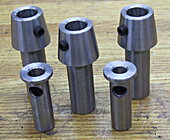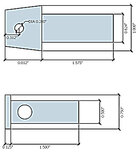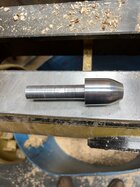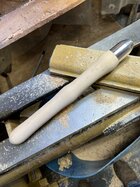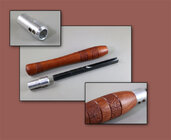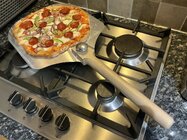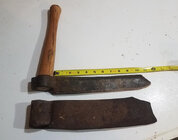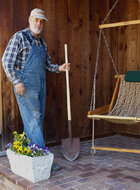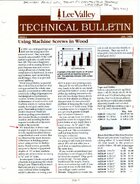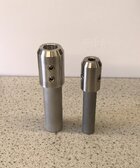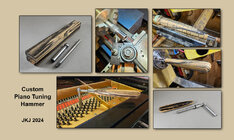Based on the description and photo in the link, It looks like those would fasten quite securely on the handle. And as indicated, they would allow drilling as deep as desired for the tool shaft.
View attachment 71978
However, for my own use I like the overall diameter of the metal to be closer to the diameter of the tool, more comfortable for my hands and easier to control, especially for fine detail on smaller work.
But one shown above is not nearly as bad as the only inserts I could find to buy when I first started making handles like this! For example, look at the two in this picture for 1/4" diameter tools - I bought the aluminum insert on the right and made the one on the left from steel.
View attachment 71979
The smaller diameter insert allowed reducing the diameter of the tool at the end and let me hold it more comfortably,
especially when using short handles one-handed and for better control of fine detail. The fatter diameter shouldn't matter much to those who usually turn large things and always use both hands on longer handles.
And someone with hand/finger problems may prefer a larger diameter to grip. For that, maybe some texture on the metal would help.
The nice thing about making them myself is I can make them any way I want!
This batch shows some I made from aluminum for 1/2", 3/8", and 1/4" tools.
(I cut very shallow grooves into the part embedded into the wood for better holding with epoxy. I always use two set screws.)
View attachment 71980
JKJ

